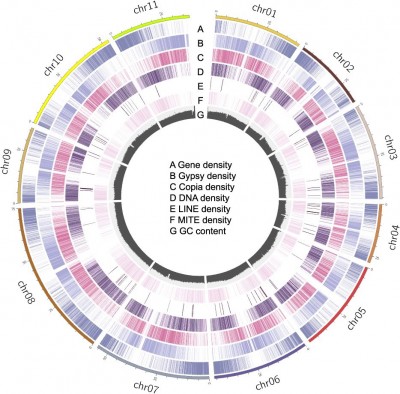A team of researchers has achieved a significant milestone by generating the first telomere-to-telomere (T2T), gap-free genome of the mung bean, scientifically known as Vigna radiata. This groundbreaking work sheds light on the genetic variations that have influenced the plant’s domestication and adaptation. The findings are expected to have profound implications for agricultural practices, particularly in breeding programs aimed at enhancing yield and resilience.
The research utilized advanced sequencing technologies, including PacBio HiFi, Oxford Nanopore, and Hi-C sequencing, to construct a comprehensive genome map. The study identified critical genetic changes linked to plant architecture, stress response, and metabolic pathways, which are essential for the mung bean’s ability to thrive in various environmental conditions.
Insights into Genetic Changes
One of the key revelations of this research is the role of transposable element amplification in reshaping gene expression. Researchers found that this amplification affected genes involved in vital processes such as fatty acid synthesis, suberin formation, and phenylpropanoid metabolism. These findings indicate that strong natural selection has acted on these genes, highlighting their importance in the evolution of the mung bean.
The gap-free genome provides a solid foundation for understanding the evolutionary history of Vigna radiata. It allows scientists and agronomists to explore the genetic basis of traits that are crucial for improving the crop’s performance. This research opens up new avenues for molecular breeding, which can lead to the development of mung bean varieties with enhanced yield and resilience against environmental stressors.
Implications for Agriculture
The implications of this research extend beyond academic interest. With global food security continuing to be a pressing concern, the ability to breed crops that can adapt to changing climates is vital. Mung beans are already recognized for their nutritional value and environmental benefits, such as nitrogen fixation in soil. By harnessing the insights gained from the gap-free genome, breeders can aim to cultivate varieties that not only yield more but are also better equipped to withstand adverse conditions.
As agricultural demands grow, understanding the genetic makeup of important crops like mung beans will play a crucial role in sustainable farming practices. The research team’s findings, published in October 2023, are expected to set a new standard in plant genomics and contribute to the ongoing efforts to enhance food production in a rapidly changing world.
This comprehensive exploration of the mung bean genome underscores the importance of genetic research in agriculture. It demonstrates how science can pave the way for innovative solutions to some of the most pressing challenges facing food security today.






































































